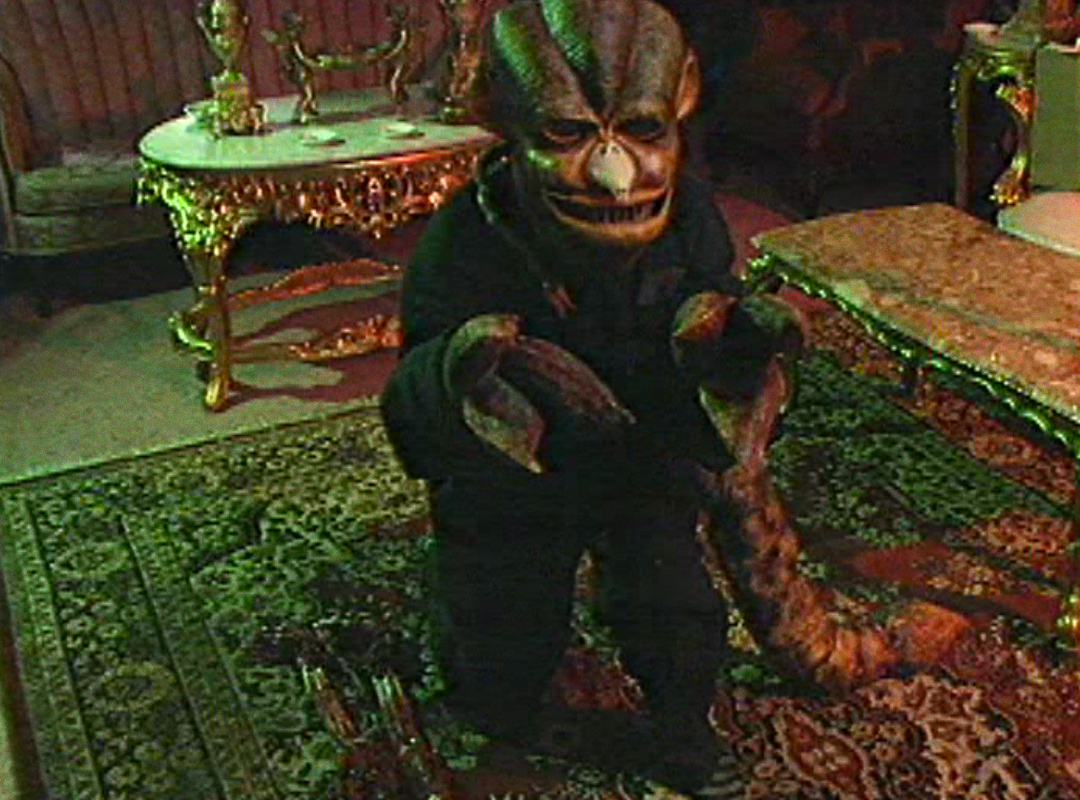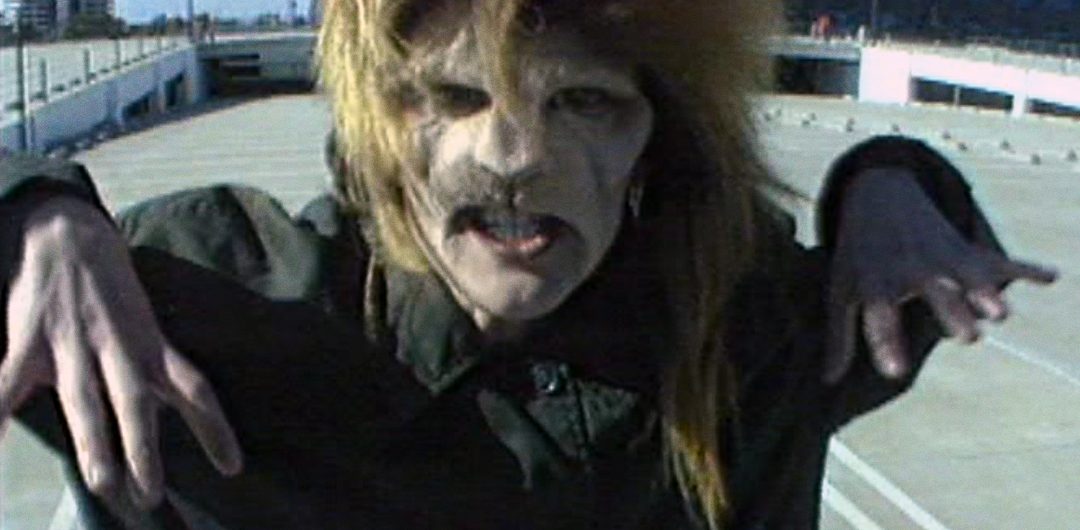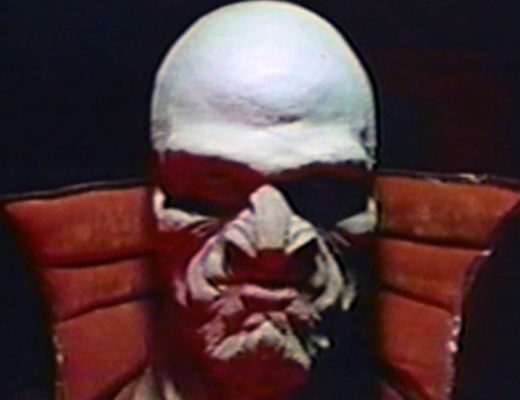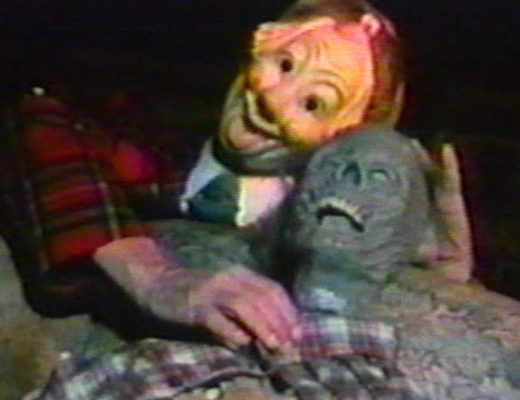This is an updated version of a review that was originally published in Bleeding Skull! A 1990s Trash-Horror Odyssey.
In H.G. Wells’ short story “The Crystal Egg,” an antique dealer finds a mysterious object (spoiler alert: it’s a crystal egg) that exudes a mesmerizing power. The dealer gazes into the egg and sees a vision of a bizarre, otherworldly landscape. It’s nothing like anything he’s ever seen. He sees moss-covered forests, buildings with no doors, and strange creatures with giant wings and tentacles. The night sky in this world is much like ours, except there are two moons. Two! Turns out, the crystal egg is a window to Mars. It is a way for us to look at Martians and a way for Martians to look at us. But how did this crystal egg get here? What other powers does this crystal egg hold? No one knows because the egg was sold off and the antique dealer died—mysteriously, of course.
Wells wrote a number of great stories, but “The Crystal Egg” is not one of them. Today it doesn’t read as particularly engaging or macabre, but you could understand how it might have captivated and shocked audiences in 1897. The story is less about the actual aliens or the foreign landscape than it is about humans’ fascination with the unknown. But when you read the story today, you’re definitely more interested in the aliens. And when you don’t get to learn more about them, you get frustrated and bored really quickly. You wonder, why am I reading about this milquetoast antique dealer when I could be reading about possibly dangerous aliens with giant silvery wings and tentacles?
Dead Time Tales is loosely based on short stories by H.G. Wells, Rudyard Kipling, and Mary Shelley, but you’re probably better off reading those short stories than watching this anthology. Produced, written, and directed by Ron Ford (Creaturealm: From the Dead, two Alien Agenda anthologies), the film explores relationship melodrama and trashy lingerie, and it throws in some gore and monster effects.
In “Crystal Gazing,” an antique dealer named Winston finds a crystal with a mysterious, magnetic power. His nagging harpy of a wife belittles him: “You’re a lousy cook, a lousy bookkeeper, and a lousy chauffeur!” She demands that he make her a sandwich. The crystal eats the sandwich, even though the sandwich doesn’t look appetizing. Winston ends up selling a boudoir photograph of a very buxom woman to a customer named Eric, who becomes the main character in the next short.
In “Cold Feet,” Eric becomes obsessed with the photograph and ends up inside it. The woman writhes and wiggles in her thong and offers him a deal: she will give him a night of passion, but in return he will allow her to control his body in the human world. Sounds like a fair deal. There’s some awkward lovemaking, which features nipple clamps and hot candle wax. At some point, Eric looks in a mirror and sees a monster, which is really a person in a lion mask. “Cold Feet” is supposedly based off Mary Shelley’s short story “The Transformation,” but it is difficult to see the connection. Shelley’s story explores the supernatural and includes a demonic dwarf who is a servant of Satan. “Cold Feet” has a guy who may or may not be in love with his fiancée. Clearly, you know which is better.
In “Bestiality,” a few Mafioso thugs come into Winston’s antique shop to shake down the joint. The mob boss, Harry, is played by none other than “film star Randal Malone.” He was the breakout star in Creaturealm: From the Dead with his melodramatic and highly irritating performance. He most certainly over-delivers here. Harry gets a mysterious ring which changes him. He becomes angrier and even more irritable and aggressive. He develops an uncontrollable appetite for raw meat and he eventually transforms into an ape and goes bananas. “Bestiality” is based off of Rudyard Kipling’s short story “The Mark of the Beast,” which is really a commentary about colonizers and the native people they viciously conquer. The connection here is weak and confusing, but you can’t blame Kipling for that.
All in all, Deadly Tales has its moments. There are some incredible monster effects along with a bit of gore and sleaze. There’s a topless bar, a stripper with a heart of gold, and the accurately named Le Rendezvous Motel. There are also three pairs of pleated khakis. But the problem is that there isn’t enough. Not enough gore, not enough sleaze, not enough action. What we mostly get is long scenes of dialogue where someone argues with someone else. Still, there are fleeting moments of fun and ambition. I certainly appreciate that the filmmakers were inspired by literature; the world needs more than just rehashes and homages to The Evil Dead or box-office horror franchises. But if you were to take time to construct a fantastic alien beast that’s a cross between a gummy lobster and an acorn squash with a beak, then it should be in at least half the movie, if not the whole thing. It should be given the screen time it demands and deserves. But in Deadly Tales we get about three minutes of spectacular gore and joyful monster transformations. It’s just not enough. Though, to be fair, it’s never enough.






